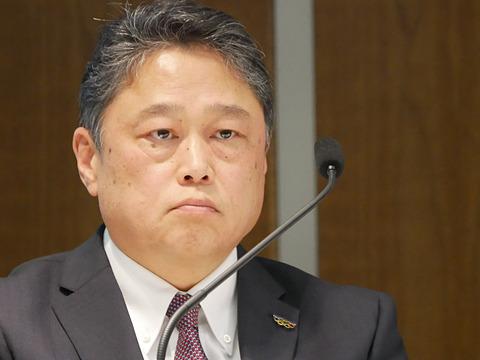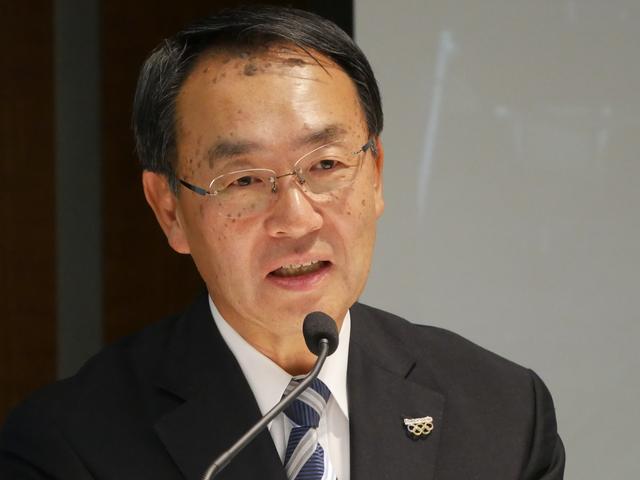2018 financial results briefing session that President Tsuga mentioned about the relationship with Panasonic and Tesla
Panasonic announced its consolidated financial results for fiscal 2018 on May 9. Sales increased 0.3% year-on-year to 8,2.7 billion yen, operating income increased 8.1% to 411.4 billion yen, income before income taxes increased 10.0% to 416.4 billion yen, and net income attributable to owners of the parent company was 20.4. Sales and profits increased by% to 284.1 billion yen.
Hirokazu Umeda, Director, Managing Executive Officer and CFO of Panasonic said, "Sales were about the same as the previous year, but operating income declined in all business segments. As a result, profits increased overall, "he said." Automotive & Industrial Systems posted an increase in overall sales due to growth in automotive and energy, despite the impact of a decline in industrial sales due to the worsening Chinese market conditions. However, operating profit declined due to the decline in development assets in Automotive and the loss in sales of Industrial. "
Mr. Hirokazu Umeda, Director, Managing Executive Officer and CFO of Panasonic CorporationBy segment, Automotive & Industrial Systems posted sales of ¥ 2,983.1 billion, up 6%, and operating profit of ¥ 56.4 billion, down 40%. In addition, appliance sales decreased 1% year-on-year to 2,750.6 billion yen, and operating income decreased 20% to 85.9 billion yen. Sales of Eco Solutions increased 4% year-on-year to 2,036.1 billion yen, and operating income decreased 20% to 64.6 billion yen. Sales of Connected Solutions increased 2% year-on-year to 1,127.7 billion yen, and operating income decreased 9% to 94.4 billion yen.
Panasonic is producing batteries for Tesla in collaboration with the company at Giga Factory in Nevada, USA. Recently, Tesla CEO Elon Musk has affected stock prices by tweeting that Panasonic's battery production has become a bottleneck in the production of the Tesla Model 3. At this press conference, Panasonic President Kazuhiro Tsuga mentioned how it happened.
President Tsuga said, "Tesla and Panasonic are not just a supplier, but a partner. Ichiren Susumu. It's just as easy to say if you're a family with blood. I can't say anything about the relationship between the suppliers. In such a relationship, the fact that they fluttered with each other had such an impact. "
"I personally think that I need to communicate more closely with Earon, and I also think that we should avoid creating strange misunderstandings. Once every three months, I go to the United States and go to Earon. I've been taking the time to talk frankly, and sometimes I have something to say to each other. At that time, Panasonic's batteries may have been the bottleneck. However, before that, Tesla's manufacturing was a bottleneck. If either one works hard, one usually becomes a bottleneck. Overcapacity does not work. Both companies turn both wheels well. However, maintaining full operation is a pattern of success for this business. It's common for the two wheels to turn a little differently. The relationship is very good. "
In addition, "The dry cell business decides everything by ourselves, such as making things at our own pace, in a place where we can do it easily, at our own price, and in terms of increasing production volume. But at Tesla's Giga Factory, the location and quantity are decided by Tesla, and the price is decided by negotiation. How to secure human resources while there are many people who hire, educate, and quit local people There is also a big risk in terms of doing it. While slapstick, I could barely follow the launch of Model 3. That was a lot of cost and waste. It put pressure on profits, but 35 GW The capital investment for full production is over. The biggest theme of this year is how to increase the productivity and make as many batteries as possible with good quality and high yield. Focus on that. If so, profits will increase. What is the biggest risk of the factory? It is a situation where the equipment is not working even though it has been invested and a sufficient number cannot be sold. Tesla is also engaged in the storage battery business as well as EV. It has the purchasing power to fully operate its capacity. Given that, it is easy to think that this business will be profitable at an early stage. "
Regarding future investment, which was partially reported to have been frozen, "The top priority is to make as many batteries as possible with the equipment we have invested in now. It is still a high-speed line, which is a highly productive line. Is not in full operation. Also, the line stopped due to the switch from 18650 to 2100 batteries. There is work to fix it. This year, we should do as close to full production as possible. Investment. "There is still time to think about it after that," he said. "However, if Tesla introduces Model Y next year and Tesla's business grows significantly, it is certain that the batteries will run out. At that time, we will discuss with Tesla, including the balance with Tesla's Chinese factory. "
Panasonic also announced its consolidated earnings forecast for fiscal 2019 (April 1, 2019-March 31, 2020). Sales decreased 1.3% YoY to 7.9 trillion yen, operating income decreased 27.1% to 300 billion yen, income before income taxes decreased 30.4% to 290 billion yen, and net income attributable to owners of the parent company was 29.6. It decreased by% to 200 billion yen.
The company will start a new medium-term strategy from FY2019, and will start with a decrease in sales and profits in the first year.

Umeda, Director and Managing Executive Officer, said, "We will implement business portfolio reforms as the first year of the new medium-term management plan. Operating income and net income are expected to decrease by incorporating business risks in addition to business structural reform costs." "In the new medium-term strategy, we will move away from low profits and return profits to a growth trajectory by promoting further portfolio management," said President Tsuga.

Panasonic will establish a joint venture with Toyota Motor Corporation in the automotive square battery business by the end of 2020, and on May 9, 2020, a joint venture company with Toyota Motor Corporation in the city planning business, "Prime Life Technologies". It has announced that it will be established in January, and these efforts will be included in the business portfolio reform. In addition, by taking drastic measures for low-profit and deficit businesses such as home appliances and semiconductor businesses, including structural reforms in the solar business, it will lead to improved profitability.
Regarding Prime Life Technologies, a joint venture with Toyota, President Tsuga said, "When New Town was built, we made use of the characteristics of the manufacturing industry when providing industrialized housing with high quality and reliability. However, nowadays, the demands are diversifying, and it is required to create a city that combines commercial facilities and service industries so that people can live for generations. I thought that there would be restrictions, so I thought about making it a separate company. I had the opportunity to have various discussions with Toyota, including the battery business, and we made a proposal in that, but Toyota also made the same. I was excited to hear that he wanted to make a good proposal. "
Panasonic will change its business segment from FY2019. Sales of "automotives" such as in-vehicle devices and in-vehicle batteries are expected to increase by 4% to 1,577.0 billion yen, and operating profit is expected to be minus 15 billion yen from the previous year's minus 12.1 billion yen deficit.
"For in-vehicle equipment, we will carry out management reforms with profit growth as our top priority, and concentrate on projects in areas where we have a competitive advantage. For in-vehicle battery square batteries, we will invest in expanding production at the Himeji and Dalian plants. In the case of cylindrical type, we aim to improve profitability by improving the productivity and operation of our North American factory. However, sales will decrease during the transition period of the product cycle for in-vehicle equipment. Both shaped batteries will grow significantly, and overall sales will increase. Operating income will increase due to the effect of efforts to rationalize and increased sales of in-vehicle batteries, but due to the increase in fixed costs associated with the start-up of battery factories in Dalian and Himeji, China. , Will be in the red of 15 billion yen. "
Sales of "Industrial Solutions" decreased by 4% to 1,360 billion yen, and operating income increased by 2% to 70 billion yen. "In fiscal 2019, we will concentrate our investment in growth fields in the in-vehicle and industrial fields, accelerate the transformation of our business structure, and work to improve operational efficiency."
In addition, appliance sales increased 1% year-on-year to 2,770 billion yen, and operating income decreased 11% to 76.5 billion yen. Sales of "Life Solutions" decreased by 4% from the previous year to 1,950 billion yen, and operating income increased by 151% to 162 billion yen. Panasonic established Prime Life Technologies, a joint venture with Toyota Motor Corporation in the housing business, on January 7, 2020. As a result, Panasonic Homes will be removed from Panasonic's consolidated subsidiary in the fourth quarter of 2019, so sales are expected to decline. In addition, sales of Connected Solutions increased by 2% year-on-year to 1,150 billion yen, and operating profit decreased by 8% to 87 billion yen.
On the other hand, it also announced a new medium-term strategy starting in 2019. In addition to clarifying plans to aim for an EBITDA growth rate of 5 to 10% and an EBITDA margin of 10% or more in a core business consisting of ROE of 10% or more, spatial solutions, field processes, and industrial solutions from FY2021 onward. He mentioned that he would aim to "execute portfolio management," "thoroughly strengthen the management structure," and "a company that realizes the lifestyle update that he is aiming for." He also selected and concentrated the business, drastically took measures for the deficit business and improved the efficiency of indirect business, and showed the stance of reducing fixed costs to contribute to profit of 100 billion yen.
In addition, the new business divisions are divided into core businesses, re-challenge businesses, and co-creation businesses, and "the new business divisions will transcend the boundaries of companies and organizations and realize profit growth and profitability improvement."
Positioning the core business as a business that expands profits, we have included spatial solutions, field processes, and industrial solutions. In FY2019, it plans to aim for sales of 4.2 trillion yen, operating income of 280 billion yen, and EBITDA of 390 billion yen in these core businesses. "Currently, core businesses account for about 70% of EBITDA, but we plan to increase profits by about 100 billion yen in core businesses by FY2020."
The re-challenge business is positioned as a business that emphasizes profitability improvement, and includes automotive and in-vehicle batteries. "We will concentrate on areas where we have strengths," he said. In the co-creation business, we will include the home appliances business and the housing business, and will strengthen our competitiveness by strengthening local initiatives and collaborating with other companies.
Panasonic has a history of advancing its efforts in three business categories: high-growth business, stable growth business, and profit improvement business.
President Tsuga said, "In the past three years, we aimed to establish an increase in sales and profits mainly in the in-vehicle business, but the profit generated from the business was far below the initial forecast. Development costs for Automotive, which is positioned as a high-growth business, The number of cylindrical in-vehicle batteries has increased significantly, and the rapid expansion of production has led to a lack of ability to respond to various risks, resulting in sluggish profits. "
